Long Range Bomber TU-16
A new era in the Russian far aviation opened the Tu-16 - the first Soviet long-range bomber with a turbojet engine and the second in the world serial aircraft of this class.
Work on the design of the jet engine, designed to replace the piston Tu-4, were deployed in the design bureau A.N. Tupolev in 1948. Initially, they were proactive and relied on preliminary theoretical studies conducted at the Design Bureau and TsAGI to shape the appearance of heavy combat aircraft with turbojet and swept wings of large elongation (it should be noted that these works, unlike the aerodynamic centers of the United States and Great Britain, were conducted by TsAGI independently, without using captured Germanic materials, which at the time of the start of work on the creation of a bomber was not yet at the disposal of Soviet specialists).
At the beginning of 1948, a team of projects from the Tupolev firm completed a purely applied work “Investigation of the flight characteristics of heavy jet aircraft with swept wings”, in which possible solutions to the problem of creating a jet bomber with a speed approaching 1000 km / h and 6000 bombing were considered kg, having weapons and crew like the Tu-4.
The next step was the work of the OKB to study the influence of area and wing extension on the flight characteristics of an arrow-swept aircraft, completed in February 1949. It considered hypothetical designs of heavy aircraft with take-off weight up to 35 t, wing area in the range from 60 to 120 м2 and various the values of the elongation of the wing. The influence of these parameters and their combinations on the flight range, the length of the run, speed and other flight characteristics of the aircraft was studied. In parallel, practical work was carried out on the study of swept wings in relation to heavy jet aircraft.
In a short time, an experimental bomber project, an 82 aircraft with two RD-45F or VK-1 engines, was created at the OKB. The aircraft was designed to obtain large, close to sound, flight speeds corresponding to M = 0,9-0,95.
The design was based on the “73” aircraft - a project of a bomber with a straight wing, which was worked out in the OKB Design Bureau. Tupolev. The main difference was in the application of the swept wing with the sweep angle 34 ° 18 '. The wing was assembled from symmetrical profiles of the 12-0-35 type along the center section and CP-1-12 profiles along the outer part of the wing. Structurally, it had a dvuhlonzheronnuyu decompression design.
The horizontal and vertical tails were also arrow-shaped (the angle along the leading edge was 40 °).
In the project "82" was supposed to use and other innovations of the time - power in the control channels of the aircraft. However, during the construction of the prototype, due to low operational reliability, these devices were abandoned, leaving only rigid mechanical control.
The 82 aircraft project was considered by the customer, the Air Force, and then in July 1948, the USSR Council of Ministers issued a decree on building an experimental jet bomber under the designation Tu-22 (the second aircraft of the AN Tupolev Design Bureau; earlier, in 1947 , the work was carried out on the project of the high-altitude reconnaissance Tu-22 - aircraft "74").
The construction of the new bomber was carried out at a “shock” rate, and already 24 in March 1949 was test-pilot A.D. The flight made the first test flight on an experimental 82 aircraft.
During the tests, the maximum speed of 934 km / h was reached, which by 20% exceeded the speed of the Tu-14 bomber (“81”), also equipped with a TRD, but had a straight wing and factory and state tests during this period.
The 82 was a purely experimental machine, it lacked a panoramic-sighting radar, there was little defensive rifle-gun armament, therefore, based on the 82, the bureau designed the 83 bomber with reinforced armament and a PS radar sight - NB or precision guidance equipment on the target "RM-S", installed instead of the radar. The aircraft "83" in the bomber version for construction and mass production was not accepted, because with the same engine VK-1, but with a direct wing, the IL-28 front bomber was quite popular in the mass series; .
On the basis of the 83 aircraft, at the end of the 40s, a fighter version of the aircraft was worked out. It was supposed to create an interceptor aircraft with fixed powerful cannon armament, long range and duration of flight. However, the command of air defense aviation did not evaluate this project at that time, although after a few years it returned to the idea of a long-range heavy fighter-interceptor, but already with supersonic flight speed and missile armament (La-250, Tu-128).
During the design of the aircraft "82" in the design bureau, the design of the aircraft "486" was worked out in general, in which it was supposed to use the fuselage layout with three paired cannon defensive installations, and the power plant, unlike the 82, should consist of two TR-AM-TKRD-02 with static thrust 4000 kgf. With the same sweep wing, the 486 should have reached a maximum speed of 1020 km / h. The estimated range of this 32-ton aircraft with 1000 kg bombs reached 3500-4000 km. This project could already be considered as a transitional one from a front bomber to a long-range bomber with a high subsonic speed.
In 1949-1951 The design bureau was working on the projects of long-range 86 and 87 jet bombers, which, according to the layout, repeated the 82 aircraft, but had significantly larger dimensions and weight. They were supposed to install two engines designed by A. Mikulin (AM-02 with 4780 kgf) or A. Lyulki (TP-3 with 4600 kgf). The speed of each bomber was to reach 950-1000 km / h, the range - to 4000 km, and the bomb load - from 2000 to 6000 kg. Their take-off weight was within 30-40 t. The 491 aircraft project was also in operation — an upgrade of the 86 and 87 aircraft, aimed at further increasing the flight speed. This project envisaged a wing with a sweep angle on the leading edge 45 °. The estimated maximum speed of this aircraft at a height of 10 000 m corresponded to M = 0,98, that is, the machine could be considered as transonic.
Research on these topics ultimately resulted in a new project with the code "88". By this time, under the leadership of A. Mikulin, an AMD-3 TRD was created with an 8750 kgf bore. However, the appearance of the aircraft was not immediately formed: the difficult task of determining the size of the aircraft, its aerodynamic and constructive layout was solved by conducting a large number of parametric studies, model experiments and field tests carried out jointly with TsAGI.
In 1950, the management of the design bureau before the project team was tasked with selecting such values of the wing area, aircraft mass and engine thrust, for which the aircraft would have the following flight and tactical data:
1. Bomb load:
normal - 6000 kg
maximum - 12 000 kg
2. Armament - on the project of the aircraft «86»
3. Crew - six people
4. Maximum ground speed - 950 km / h
5. Practical ceiling - 12 000-13 000 m
6. Flight range with a normal bomb load - 7500 km
7. Run without accelerators - 1800 m
8. Accelerator Run - 1000 m
9. Mileage - 900 m
10. Dial time 10 000 m - 23 min
Works on the project received the code 494 (the fourth project of 1949) using the OKB. It is from this project that the straight line begins, which led to the creation of the prototype 88 aircraft, and then the serial Tu-16.
Basically, according to the stated data, besides the flight range and bomb load, the 86 aircraft was satisfied, therefore, the original search for the 494 project relied on materials obtained from the design of the 86 machine, while maintaining the overall layout of this aircraft.
Considered the following options for the power plant:
- two AMRD-03 engines with static thrust according to 8200 kgf;
- four engines TR-ZA - 5000 kgf;
- four bypass engines TP-5 - 5000 kgf.
All versions of the 494 project were geometrically similar to the original 86 aircraft. The wing had a sweep angle of 36 °. The project provided several options for placing the power plant and the main chassis. For the AMRD-03 engines, it was proposed to install them in one gondola with the chassis or hang them on the underwing pylons, and place the chassis in separate gondolas (later this arrangement was used on a whole series of Tupolev aircraft).
Analysis of various aircraft variants according to the “494” project showed that the version with two AMRD-03 has better prospects than the others, due to the lower resistance and mass of the power plant.
The specified tactical performance could be achieved with the following minimum parameters of the aircraft:
- takeoff mass 70-80 t;
- Wing area 150-170 м2;
- total thrust engines 14 000-16 000 kg.
In June 1950, the first decree of the USSR Council of Ministers was issued, obliging the ANB design bureau. Tupolev to design and build an experienced long-range bomber - aircraft "88" with two engines AL-5 (Tr-5). The resolution also stipulated the possibility of installing more powerful AM-03. However, at that time, the country's leadership looked at the AM-03 as a risky venture, and the long-range bomber was needed urgently, so initially they relied on the AJI-5 as having a greater degree of readiness, especially the same engines intended for the competitor of the Tupolev aircraft IL-46. But by August 1951 the AM-03 engines had already become a reality, therefore all the efforts of the OKB were redirected to the twin-engine version with the Mikulinsky AM-03, developing 8000 kgf thrust (however, as a backup version, in case of failure with the AM-3 engine, some The project “90-88” for four TRDs TR-ZF with a load of about 5000 kgf - two engines in the root of the wing and two - under the wing).
In 1950-51 the aircraft is fully rearranged; A.N. himself took an active part in this work. Tupolev and his son L.A. Tupolev, who worked at the time in the brigade of projects.
After the “evolutionary” stage of work on the 494 project, during which the ideas of the 86 aircraft were developed, a sharp qualitative leap was made in the aerodynamic perfection of the future aircraft due to the special layout of the central part of the airframe, which tactically corresponded to the constructive solution resulting from the “rule areas, ”the active introduction of which into foreign aviation practice began only a few years later. Such an arrangement made it possible to solve the problem of interference at the junction of the wing with the fuselage. In addition, the “borderline” arrangement of the engines between the wing and the fuselage made it possible to create the so-called “active fairing”: the jet jet of the engines sucked in the air flowing around the wing and the fuselage, and thereby improved the flow in this tense aerodynamic zone of the aircraft.
For the 88 aircraft, a variable sweep wing was selected: 37 ° in the middle of the wing and 35 ° in the volumetric part of the wing, which contributed to better performance of the ailerons and flaps.
The wing was designed according to the two-spar scheme, and the walls of the side members, the upper and lower panels of the wing between the side members, formed the powerful main force element of the wing - the caisson. This scheme was the development of the scheme of the wing of the Tu-2, but the caisson in this case was large in relative size, which made the third spar unnecessary. The powerful rigid spar fundamentally distinguished the design of the 88 wing from the flexible wing of the American B-47 bomber.
Finally, all the layout decisions for the new aircraft were worked out in a brigade of general types, led by S.M. Yeger The constructive and layout features of the designed aircraft, obtained during the work and determined the face of Tupolev machines for the next 5-10 years, include:
- the creation of a large cargo (bomb) compartment in the fuselage behind the rear spar of the center section, thanks to which the dumped loads were located close to the center of mass of the aircraft, and the load compartment itself did not violate the wing power circuit;
- accommodation of the crew in two hermetic cabins with the provision of ejection of all crew members. In the rear (stern) hermetic cockpit, unlike all other aircraft, there were two arrows, which ensured their best interaction during the defense;
- creation of a complex of powerful defensive small arms and guns, consisting of three mobile cannon systems, four optical sighting posts with remote control and an automatic radar sight;
- the original chassis layout with two four-wheeled carts that turn on the 180 ° when cleaning. Such a scheme ensured a high maneuverability of the aircraft, both on concrete, and on ground and snow airfields. For the first time in the USSR, the front landing gear was used for mating wheels on one axle;
- the use of a braking parachute as an emergency tool when landing an aircraft.
Work on the design and construction of the aircraft "88" was carried out in a very short time, "for everything about everything" was given 1-1,5 of the year. The layout of the bomber began to build in the summer of 1950, it was presented to the customer in April, 1951, simultaneously with the draft design. Then, in April, the production of the aircraft began. At the same time in the assembly were two gliders: one for flight tests, the other - for static ones.
At the end of the 1951, the first prototype of the 88 bomber, called the Tu-16, was transferred to the flight base for testing and refinement. 27 April 1952, the crew of test pilot N. Rybko raised the Tu-16 into the air, and in December 1952, it was already decided to launch the aircraft into mass production.
Obtained during testing speed exceeded specified in the technical specifications. However, the car did not reach the desired range: the design of the Tu-16 was clearly overweight. A.N. Tupolev and lead aircraft designer DS Markov organized in the OKB a real struggle for weight loss. The bill went on kilograms and even grams. All non-force elements of the structure were facilitated, in addition, the analysis of the tactical application of the bomber, designed primarily for operations at high altitudes, made it possible to establish restrictions on maximum speed for small and medium heights, which somewhat reduced the requirements for structural strength and also reduced the mass glider. The result was a largely new design, with a mass, on 5500 kg less than the mass of the airframe of the prototype.
At that time, the Kazan Aviation Plant had already created equipment for a production aircraft based on the prototype. Therefore, when it became known about works on a new, lighter version of a bomber in the Ministry of Aviation Industry, D.S. Markov was given a reprimand, which subsequently was not withdrawn, despite the fact that the second prototype 88 in April, 1953, exceeded the specified flight range.
Mass production of the Tu-16 began in Kazan in 1953, and a year later at the Kuybyshev aircraft plant. Meanwhile, the design bureau was working on various modifications of the machine, and the AM-3 engine was replaced with a more powerful RD-3M (2 x 9520 kgf).
The first production aircraft began to arrive at the line of units at the beginning of 1954, and on May 1 of the same year, the nine Tu-16 passed over Red Square. In NATO, the aircraft received the code name "Badger" ("Badger").
Following the bomber variant, the nuclear carrier was launched into mass production. weapons Tu-Xnumha. In August, 16 was tested by an experienced missile carrier Tu-1954X intended for strikes against enemy ships. Under his wing were suspended two guided cruise missiles of the type KS-16. The entire control complex, together with the Cobalt-M station, was completely taken from the Tu-1K aircraft and housed together with the operator in the cargo compartment. The range of the Tu-4X was 16 km, the launch range of the KS-1800 was 1 km.
The Tu-16 quickly began to replace in the military units long-range Tu-4 bombers, becoming the carrier of nuclear and conventional weapons at medium (or, as they say now, European strategic) ranges. From the middle of the 50-x, the Tu-16T, a torpedo bomber, whose purpose is the torpedo attacks of large sea targets and the setting of minefields was mass-produced. Subsequently (from 1965) all Tu-16 aircraft were converted into rescue Tu-16С with a Frigate boat in the bomber compartment. "Frigate" was dumped in the area of the marine accident and was taken to the victims with the help of a radio control system. The range of the Tu-16C reached 2000 km.
To increase the range of the flight, the Tu-16 designed a system for wing refueling in the air, which was somewhat different from the previously developed one on the Tu-4. In 1955, experienced prototypes of the tanker and the aircraft being refueled came to the test. After the adoption of the system into tankers, who received the name Tu-16 “Refueller” or Tu-163, conventional serial machines were re-equipped. Due to the fact that the special equipment and the additional fuel tank were easily removed, the tankers, if necessary, could again perform the tasks of the bomber.
In 1955, the tests of the Tu-16Р scout began (project “92”), which was then built in two versions - for day and night aerial photography. In the same year, work began on the creation of the K-10 aviation missile system, which included the Tu-16K-10 aircraft carrier, the K-10C cruise missile and a guidance system based on the EH on-board radar. At the same time, the antenna of the target detection and tracking station was installed in the forward fuselage of the aircraft, the KR guidance antenna was installed under the cockpit, and its beam holder, the EN turbine cabin and the additional fuel supply tank of the rocket were installed in the bomb bay. The K-10C missile was in a semi-submerged position, and before starting the engine and uncoupling it went down. The suspension compartment after the rocket uncoupling was closed with flaps.
The prototype Tu-16K-10 was produced in 1958, and a year later its serial production began. In the summer of 1961, the aircraft was demonstrated at an air festival in Tushino. In the same period, K-10S launches were successfully carried out at various fleets... In October 1961, the complex was put into service.
At the end of the 1950-s on the Tu-16 began to work radar type "Rubin-1". At the same time, in the OKB of A. Mikoyan and A. Bereznyak, work was carried out on the creation of new air-surface-class CD. As a result, the K-11-16 air strike complex appeared, which was put into service in the 1962 year. The Tu-16K-11-16 aircraft converted from the previously built Tu-16, Tu-16L, Tu-16X, could carry two KSR-2 (К-16) or КСР-11 (К-11) missiles on each wing beam holders. In 1962, they began to develop a new complex, K-26, based on the KSR-5 cruise missile. From the second half of the 60-s he began to enter service.
A special feature of the K-11-16 and K-26 was that their carrier planes could be used without rocket armament, that is, as ordinary bombers. We also managed to expand the combat capabilities of the K-10 complex. The wing pylons of the upgraded Tu-16-10-26 carrier aircraft were suspended by two KSR-5 missiles in addition to the under-fuselage suspension UR K-10С. Instead of the KSR-5, it was possible to use KSR-2 missiles, etc.
From 1963, part of the Tu-16 bombers were converted into Tu-16H tankers intended for refueling supersonic Tu-22 using the “hose-cone” system.
Large development on the basis of the Tu-16 received aircraft electronic warfare (EW), often called jamming. In the middle of the 50-s began to build mass aircraft Tu-16P and Tu-16 "Yolka". Subsequently, all the shock and reconnaissance versions of the Tu-16 were equipped with EW systems.
At the end of the 60-ies, part of the Tu-16К-10 was re-equipped into the sea reconnaissance aircraft Tu-16РМ, and several bombers, on the instructions of the country's air defense command, became carrier missile targets (Tu-16КРМ). Machines that have served their time have been used as radio-controlled target planes (M-16).
The Tu-16 aircraft were also used as flying laboratories for the development of the AL-7-1, VD-7 engines, etc. For this purpose, a movable mechanism was installed in the bomb bay area for an experienced engine suspension, which was partially set up during takeoff and landing, and after dialing heights moved forward. Such systems on the Ty-16JIJI were used not only to refine the turbojet engine, but also to study the aerodynamic properties of various types of aircraft. So, on one of the flying laboratories, we worked out the bicycle scheme of the chassis.
At the end of the 70-s, a laboratory was created - the Cyclone weather scout Tu-16. The aircraft was also equipped with outboard containers for spraying chemical agents that disperse clouds.
In civil aviation, the Tu-16 began to be used at the end of the 50s. Several vehicles (they had the unusual name Tu-104G or Tu-16G) were used for the urgent transportation of mail and were, as it were, a cargo modification of a bomber.
According to its characteristics and layout, the Tu-16 was so successful that it allowed creating the first Soviet multi-seat jet airliner Tu-104 without any problems. 17 July 1955 Test Pilot Yu. Alasheev lifted into the air a prototype Tu-104, and from next year began mass production of the machine at the Kharkov Aviation Plant.
Tu-16 - an unusual phenomenon not only in the Soviet, but also in the global aircraft. Perhaps only the American B-52 bomber and the domestic Tu-95 can match it for longevity. Over the years, 40 has been created around 50 modifications of the Tu-16. Many elements of his design have become classic for heavy combat vehicles. Tu-16 served as the basis for the development of new domestic aviation materials, in particular lightweight high-strength alloys, corrosion protection, as well as to create a whole class of Soviet cruise missiles and aircraft strike complexes. A good school was the Tu-16 for military pilots. Many of them then easily mastered more modern missile carriers, and leaving the Air Force were passenger liners built on the basis of the Tu-16 aircraft (in particular, the former commander-in-chief of the Russian Air Force, PS Deinekin, after a massive reduction of Soviet military aircraft in the early 1960s flew for a while as a commander of the Tu-104 on Aeroflot international lines).
The serial production of the Tu-16 was discontinued in 1962. Until 1993, aircraft of this type were in service with the Air Force and the Russian Navy.
With 1958, deliveries of the Tu-16 aircraft to China began, at the same time with the help of Soviet specialists in this country in mastering the mass production of bombers, designated H-6. In 1960-ies Tu-16 also supplied the Air Force of Egypt and Iraq.
DESIGN. The long-range Tu-16 bomber is designed to deliver powerful bomb strikes against enemy strategic targets. It is made according to the normal aerodynamic scheme with a mid-range swept wing, as well as swept tail. For technological and operational reasons, the wing, fuselage and tail assembly of the airframe are structurally made in the form of separate joined elements and assemblies.
The airframe is made of D-16T duralumin and its modifications, aluminum alloys AK6 and AK-8, high-strength alloy B-95, and other materials and alloys.
The fuselage of a semi-monocoque aircraft with a smooth, working skin supported by a set of frames and stringers of extruded and bent profiles is a streamlined cigar-shaped body of circular section, which in some places has a preload. It consists of almost independent compartments: nose lamp F-1, hermetic cabin F-2, front compartment of the fuselage F-3, tail section of the fuselage with bomb compartment F-4, rear sealed cabin.
In the front sealed cabin placed:
- navigator, leading the navigation of the aircraft and bombing;
- left pilot, commander of the ship;
- right pilot;
- navigator-operator, leading the work on the management and maintenance of the radar bomber sight RBP-4 "Rubidium" MM-I and the fire command of the upper gun installation.
In the rear hermetic cabin are placed:
- radio operator, providing communication with the ground and controlling the fire of the lower gun installation;
- aft gunner, controlling the fire of the aft gun installation and the radar sighting station ARS-1 "Argon-1".
The entrance to the front cockpit is provided through the lower hatch under the seat of the navigator-operator, and into the back cockpit through the lower hatch under the seat of the stern shooter. For the emergency escape of the aircraft there are emergency hatches with drop covers: for the left and right pilots on top of the fuselage, and for the rest of the crew - from the bottom.
The crew of the aircraft is protected from fire by enemy fighters and from anti-aircraft artillery shell fragments by armor consisting of plates made of materials APBA-1, St.KVK-2 / 5ц, KVK-2, and armored glass.
Swept wing (35 ° along the focal line, sweep variable on the leading edge). Transverse V wing in the plane of the chords -3 °. The design of the wing is two-spar, its middle part (caisson) is assembled from panels with thick plating reinforced by stringers. From the side of the fuselage to the No. 12 rib, fuel tanks are located inside the caisson. Wing sock removable.
The wing has two connectors: on the side of the fuselage and on the rib No. 7. On the fuselage side there is a symmetrical TsAGI HP-C-10C-9 profile with a relative thickness of 15,7% and at the end of the wing - a CP-11-12 profile - 12%.
The back of the wing is full of flaps and ailerons. Slit flaps, retractable back. Ailerons have internal aerodynamic compensation.
The tail plumage is free-carrying, single-chin, with a sweep along the focal line - 42 °. The profile of the horizontal and vertical tail is symmetrical. The stabilizer and the keel of the two-spar design, the rudders of height and direction are single-spar.
The landing gear is made according to the three-support scheme. The main racks are located on the first volumetric part of the wing and are retracted in the fairings (gondolas) back along the flight. A trolley with four wheels is mounted on each main rack. There are two wheels on the front landing gear. To improve the maneuverability of the aircraft on the ground when taxiing, the wheels of the front pillar are made manageable. The tail of the fuselage is protected when landing retractable in flight tail support. A container with two brake parachutes is mounted in the rear fuselage.
The power plant consists of two AM-ZA turbojet engines with a maximum static thrust of 8750 kgf or F-3M (9500 kgf). The launch of the TRD is made from a gas turbine starter mounted on the engine.
Air is taken at the sides of the fuselage in front of the wing by means of unregulated air inlets. The engine is supplied with fuel (kerosene T-1) from 27 fuselage and wing tanks of a soft design. The maximum fueling of the aircraft is 34 360 kg (41 400 l for T-1). To increase survivability, part of the fuel tanks is made of a protective one, there is an equipment for filling the super-fuel space with a neutral gas, as well as an anti-fire system that works automatically. During operation, the AM-ZA and RD-ZM engines were replaced by the modified RD-ZM-500 TRD with an increased resource.
Aircraft control double. The control system is rigid, without boosters. Autopilot is connected to the main control system. Flaps and rudder trimmers are controlled by electromechanisms, the elevators trimmers have electric and duplicate cable mechanical controls.
The hydraulic system is structurally designed as two independently operating hydraulic systems: the main hydraulic system and the hydraulic brake control system. The nominal pressure in hydraulic systems is 150 kgf / cm a. The main system serves to lift and release the chassis, the main opening and closing of the bomb bay flaps. The hydraulic brake control system simultaneously provides emergency release and cleaning of the chassis and the spare closing of the bomb bay flaps.
The power supply system consists of a primary DC system, powered by four GSR-18000 generators, and an 12CAM-53 type battery (backup current source). The secondary system of alternating single-phase current, powered by two converters type ПХNUMX-0.
Airtight cabins of the aircraft are of the ventilation type, air is drawn from the seventh stages of the TRD compressor. Hermetic cabins provide the crew with the necessary conditions for combat work, both in terms of temperature and pressure. Moreover, in combat conditions, in the zone of attack with anti-aircraft guns and when entering into combat with enemy fighters, in order to avoid a sharp drop in pressure in the cabins during combat damage, the differential pressure in the cabin and overboard is set constant and equal to 0,2 atm.
The aircraft is equipped with a liquid oxygen plant and oxygen apparatuses for all crew members.
The front edges of the wing have a heat suppressor with hot air from TRD compressors. Anti-icing of engine air intakes is performed on the same principle.
The front edges of the keel and stabilizer are equipped with electrothermal de-icers. The front windows of the cockpit canopy and the navigator’s front sighting glass have internal electrical heating.
POWER POINT. Two TRD AM-FOR (2 X 85,8 kN / 2 x 8750 kgs.), RD-ZM (2 x 93,1 kN / 2 x 9500 kgf) or RD-ZM-500 (2 x 93,1 kN / 2 x 9500 kgf).
EQUIPMENT. To ensure the navigation of the aircraft at the navigator and the pilots installed:
- astronomical compass AK-53P;
- remote astronomical compass DAK-2;
- navigation indicator NO-50B;
- DGMK-7 remote compass;
- magnetic compass KI-12;
- speed indicator KUS-1200;
- altimeter WD-17;
- artificial horizon AGB-2;
- Direction indicator EUP-46;
- Mm-MS-1;
- accelerometer;
- air sextant;
- the device long-distance navigation SPI-1;
- automatic radio compass ARK-5;
- radio altimeters of high and low altitudes РВ-17М and РВ-2;
- The system "Mainland" for the blind landing of the aircraft on the signals of ground radio beacons.
To ensure the piloting of the aircraft in any weather conditions and for unloading the crew on long flights, an electric autopilot AP-52М is installed on the aircraft, associated with the control system.
Aircraft radio equipment consists of:
- connected HF radio 1RSB-70М for two-way communication with the ground;
- command HF of the radio station 1RSB-70М for command communication in the connection and with ground radio stations;
- VHF command radio station RSIU-ZM for command communication within the connection and with the start;
- aircraft intercom SPU-10 for in-flight communication between crew members and their access to external communication;
- emergency transmitting radio station ABRA-45 for distress signals in case of an emergency landing of the aircraft or its accident.
Radar equipment includes:
- Rubidium-MMII radar bomber sight RBD-4 to ensure the search and detection of ground and surface objects in the absence of optical visibility, solving navigation tasks on the radar landmarks of the earth's surface and precision bombing with automatic dropping of bombs from a flight altitude from 10 000 to 15 000 m for land and surface fixed and moving targets. The radar sight RBP-4 is electrically connected to the optical sight OPB-11р;
- aircraft identification system (“friend-foe”), consisting of the SRH interrogator and the SRO;
- sighting radar PRS-1 "Argon-1" for firing in any conditions of visibility, synchronously associated with defensive rifle installations.
AFA-3M / 16 or AFA-3M / 75 devices are installed for daytime photography of the travel route and the results of the bombing of the Tu-100 aircraft; for daytime photography from low altitudes - AFA-3M / 50; for nighttime photography - NAFA-8 / 50, for photographing images on the indicator RBP-4-FA-RL-1.
During the serial construction and creation of modifications, as well as the modernization of the Tu-16 aircraft, the equipment was changed and updated, new systems and units were introduced.
On new modifications, new electronic countermeasure systems were introduced, which increased the combat stability of individual aircraft, as well as groups of Tu-16 aircraft.
The main structural differences of some serial and modernized modifications of the Tu-16
ARMAMENT. The Tu-16 has one bomb bay equipped with a typical bomber weapon system. Normal bomb load 3000 kg, maximum bomb load 9000 kg. The suspension of bombs of caliber from 100 kg to 9000 kg is possible. The 5000, 6000 and 9000 kg caliber bombs are suspended on a bridge beam holder type MBD6, smaller caliber bombs are suspended on side cluster holders of the type KD-3 and KD-4.
Aiming during bombing is done through the vector-synchronous optical sight OPB-llp with automatic side guidance associated with the autopilot, thanks to which the aircraft can turn the navigator automatically while aiming.
In case of poor visibility of the ground, the aiming is carried out with the help of RBD-4, in this case the accuracy of the bombing is increased, as OPB-11p is connected with the scope of the RBP-4 and fulfills the necessary parameters for it. The bombs are dropped by the navigator, and the navigator-operator can also perform bombing.
The PV-23 cannon defensive armament system consists of seven guns of the AM-23 type, caliber 23 mm, mounted on one fixed and three paired mobile gun units with remote control.
For firing forward in the direction of flight in the nose of the fuselage on the starboard side there is one fixed gun, which is controlled by the left pilot. For aiming at the target at the pilot on the folding bracket mounted scope PKI.
Three mobile units - top, bottom and stern - carry out the defense of the rear hemisphere. The upper installation, in addition, "shoots" the upper part of the front hemisphere.
The upper installation is controlled by the navigator-operator, the auxiliary control from the aft aiming post is performed by the aft arrow. The lower installation controls from the two (left and right) blister aiming posts of the gunner-radio operator, the auxiliary control from the stern aiming post carries out the stern arrow.
Fodder control is conducted from the aft sighting post of the fodder arrow, which in the crew is the commander of the firing units (FOC); the auxiliary control of the installation is carried out: from the upper sighting post - by the navigator-operator, from the lower sighting post - by the gunner-radio operator.
At sighting posts, sighting stations of the PS-53 type are installed, with which the IRS-1 is synchronously connected.
The Tu-16X on the double-winged wing holders hung up the KS-1 missiles, a pressurized cabin with a Cobalt-M guidance radar with an operator was placed in the cargo compartment, the antennas were lowered like on Tu-4.
Tu-16A - the carrier of a nuclear free-fall bomb - had a cargo compartment with thermal insulation, and the aircraft skin was covered with a special protective paint that protects against light radiation from a nuclear explosion.
On the Tu-16K-10 - carrier of the K-10С type aircraft-projectile - in the nose of the fuselage were installed antennas of the radar guidance system K-10С of the "EN" type. In the cargo compartment, a K-10 projectile was suspended on a girder drainage in a semi-submerged position. Behind the cargo shack there was a germocabine for the operator of the EN station. The navigator moved to the place of the navigator operator. An additional fuel tank for launching the engine of the K-10C projectile was introduced. The converter PNNUMX-0 (software-xNUMX) has been added to power units of the EH station.
The Tu-16K-11-16 is equipped with DAC-2 or DAC-11 projectiles located on wing beams. It is possible to use the aircraft as a bomber or in a combined version. An antenna of the Ritsa reconnaissance station and a Rubin-1KB radar are installed in the nose. Nose gun removed.
The Tu-16K-26 is armed with KSR-2, KSR-11 or KSR-5 projectiles and is completely similar in armament to the Tu-16K-11-16 (with the exception of the KSR-5 suspension units).
The Tu-16-10-26 carries two K-10S projectile or two DAC-5 projectiles on the underwing pylons.
Tu-16T - a torpedo bomber and a mine director in the cargo compartment hung torpedoes and mines of the PAT-52, 45-36MAV, AMO-500 and AMO-1000 type.
Tu-16P and Tu-16 "Yolka" - REP aircraft, equipped with various systems of enemy electronic countermeasures.
Passive and active means of REP were mounted in the cargo compartment and in the unified tail section (CWD). With the decrease in the size of the REB equipment and the improvement of its operational capabilities, this equipment was introduced in almost all versions of the Tu-16 aircraft.
The reconnaissance aircraft Tu-16Р were equipped with various interchangeable sets of AFA or NAFA for high-altitude, low-altitude and night photography. In the case of using the Tu-16P (version of the Tu-16P2) for night photography in the bomb bay, photo-bombs were hung on some holders to illuminate reconnaissance objects. Under the wings on the pylons were hung, depending on the task to be performed, containers with electronic reconnaissance equipment or containers with intakes and analyzers of radiation reconnaissance.
CHARACTERISTICS Tu-16
DIMENSIONS. Wingspan 33,00 m; length of the aircraft 34,80 m; 10,36 aircraft height m; 164,65 m2 wing area.
MASSESKg: normal takeoff 72 000 (Tu-16) 76 000 (Tu-16K) empty aircraft 37 200, maximum takeoff 79 000, the maximum landing 55 000 (when landing on dirt runway 48 000), fuel and 36000 oil.
FLIGHT CHARACTERISTICS. Maximum speed at a height of 1050 km / h; practical ceiling 12 800 m; practical range with two UR on the underwing nodes 3900 km suspension; practical range with combat load 3000 kg 5800 km; distillation range 7200 km; the length of the run 1850-2600 m; the length of the run 1580-1670 m (with a brake parachute 1120-1270 m; maximum operating overload 2.
MILITARY APPLICATION. In terms of its main characteristics, the Tu-16 aircraft remained quite advanced until the end of the 1950-s, surpassing the main American strategic bomber Boeing B-47 “Stratojet” in almost all parameters. In general, the Tu-16 corresponded to the British bomber Vickers "Valiant" and somewhat inferior aircraft Avro "Vulcan" and Handley Page "Victor" in range and ceiling. At the same time, a significant advantage of the Tupolev machine was its powerful defensive armament, the layout allowing the aircraft to be equipped with various rocket armaments suspended both under the wing and under the fuselage, as well as the ability to be operated from unpaved runways (a unique feature for a heavy bomber).
In addition to the Air Force and Navy of the USSR, the Tu-16 was supplied to Indonesia (20 Tu-16K), Egypt and Iraq. They were first used during the Indonesian-Malaysian conflict.
Before the “six-day war” in June, the 1967 of the Egyptian Air Force also received 20 Tu-16K bombers with SDC-1 bombers. These aircraft, according to the Israeli command, were the main threat to the territory of Israel and therefore were destroyed in the first place: as a result of a massive strike of fighter-bomber aviation, all Tu, neatly lined up on Egyptian airfields and well-targeted, were put out of action During the first hours of the conflict, not a single bomber ever took off.
In 1973, the Egyptian Air Force, which received the new Tu-1967-16-11 aircraft instead of planes destroyed in 16, managed to "rehabilitate" by successfully using 10 anti-radar missiles KSR-11 against Israeli radars. According to the Egyptians, most of the targets were hit without loss from the Arab side. At the same time, the Israelis claimed that they had managed to shoot down one bomber and most of the missiles, and two Israeli radar posts and a field ammunition depot on the Sinai Peninsula were destroyed. 16 bombers, based at airfields south of Sinai, took part in the fighting beyond the reach of Israeli aircraft.
After the rupture of military ties between Egypt and the USSR in 1976, the Egyptian Tu-16 found themselves without spare parts, but the problem was resolved by requesting help from China, which supplied the MiG-23BN fighter-bomber with the necessary equipment.
During the fighting in Afghanistan, Tu-16 bombed from mid-altitude, dropping free-falling bombs on the Mujahideen bases. Departures were carried out from airfields in the USSR. In particular, areas adjacent to the cities of Herat and Kandahar were subjected to heavy aerial bombardments using Tu-16 bombers. Typical aircraft armament consisted of 12 bombs FAB-500 caliber 500 kg.
During the Iran-Iraq war, the Tu-16K-11-16 of the Iraqi Air Force launched repeated missile and bombing attacks on targets in the depths of Iranian territory (in particular, they raided the airport in Tehran). During the fighting in the Persian Gulf area in 1991, the Iraqi Tu-16, almost flying out, remained on the ground, where they were partially destroyed by Allied aircraft.
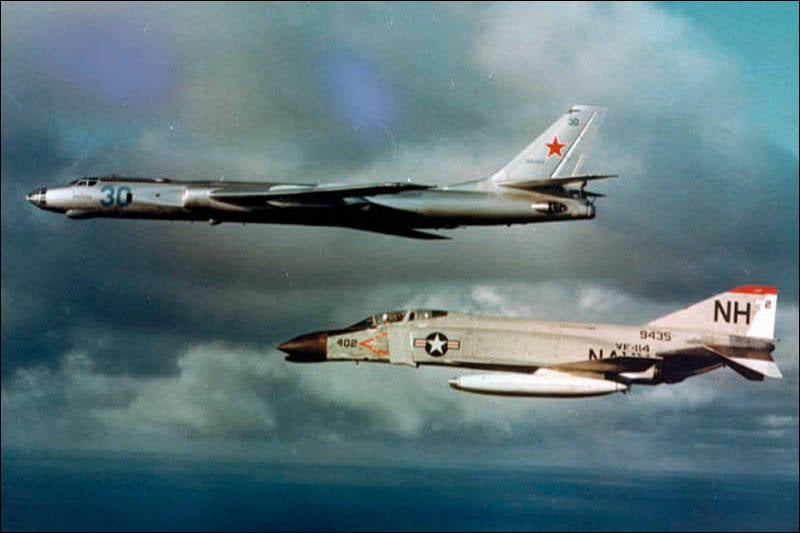
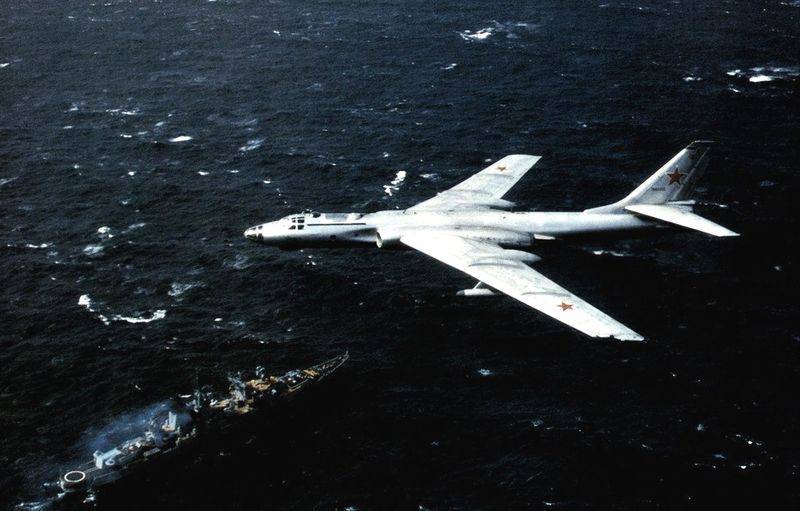
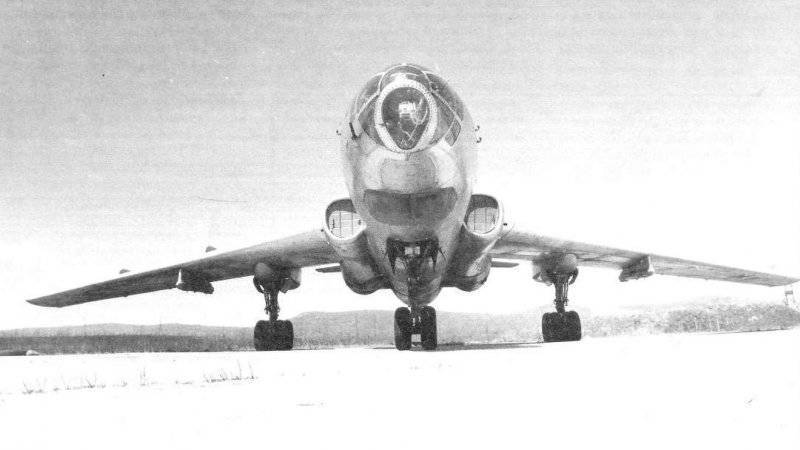
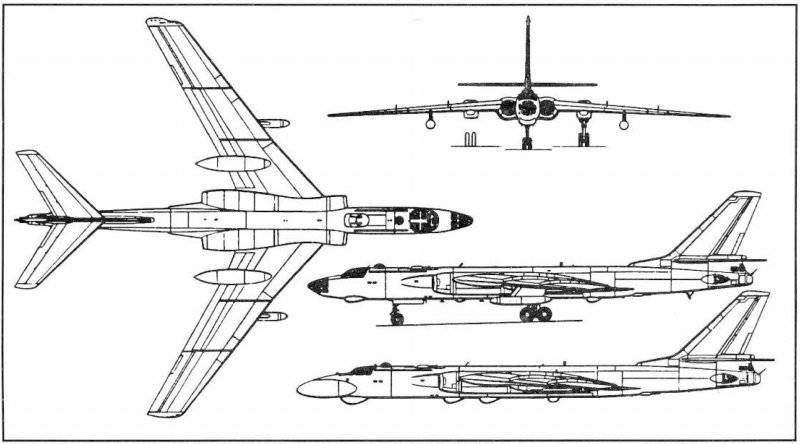
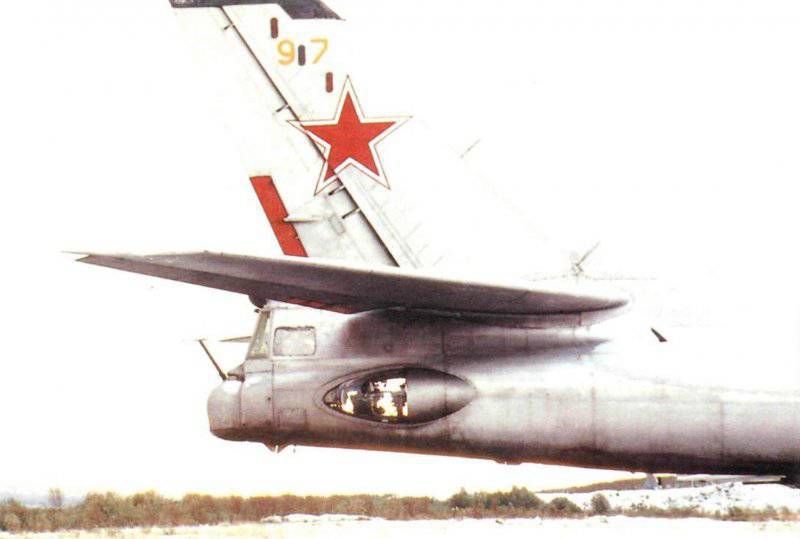
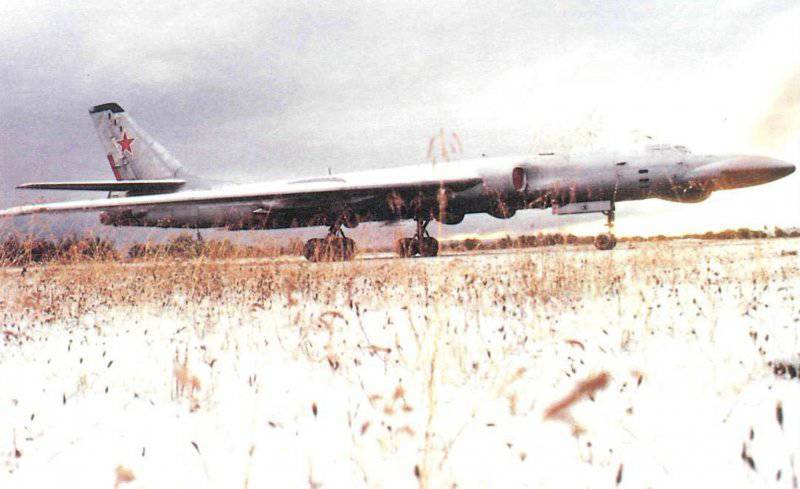
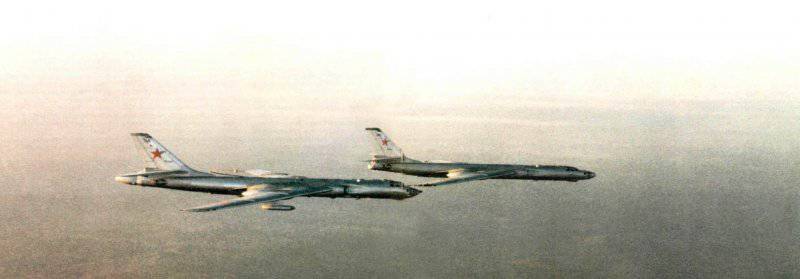
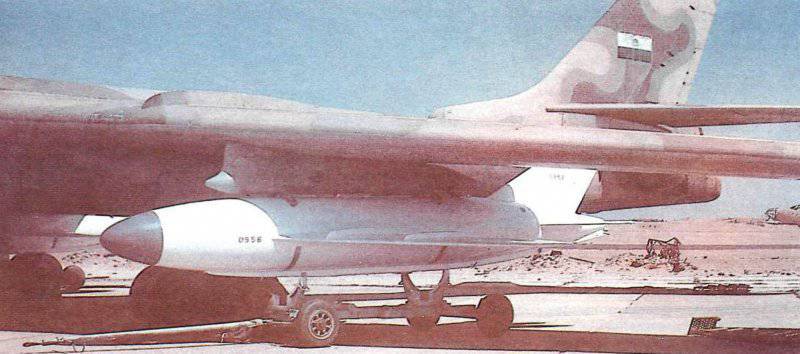
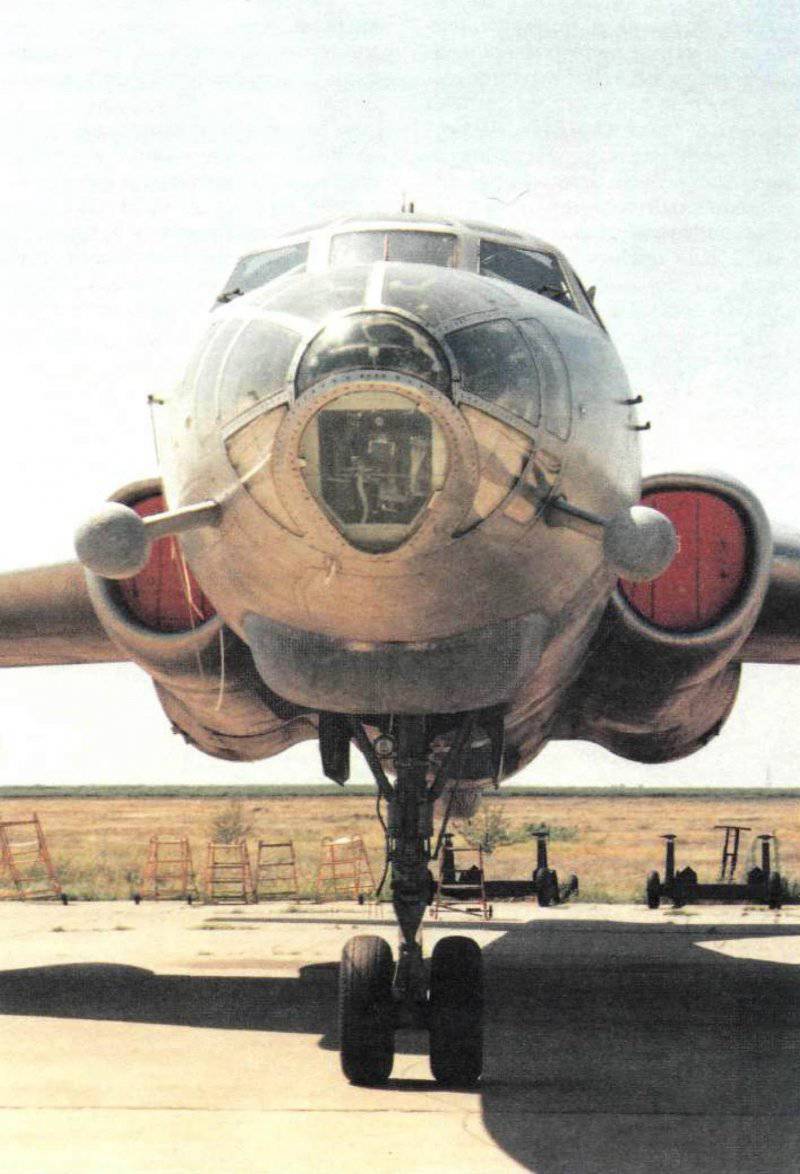
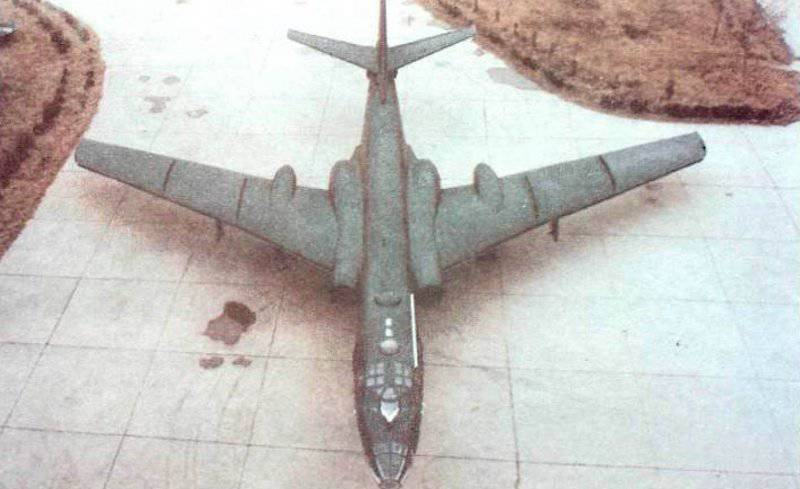
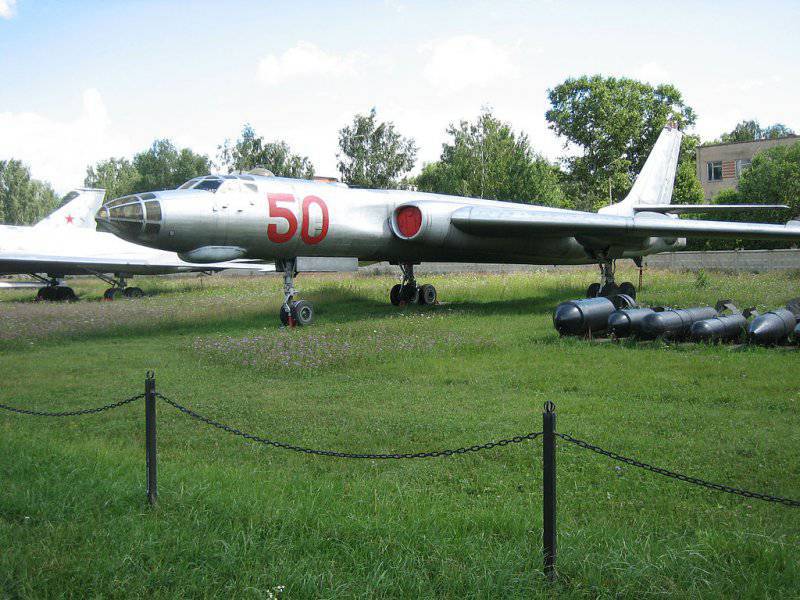
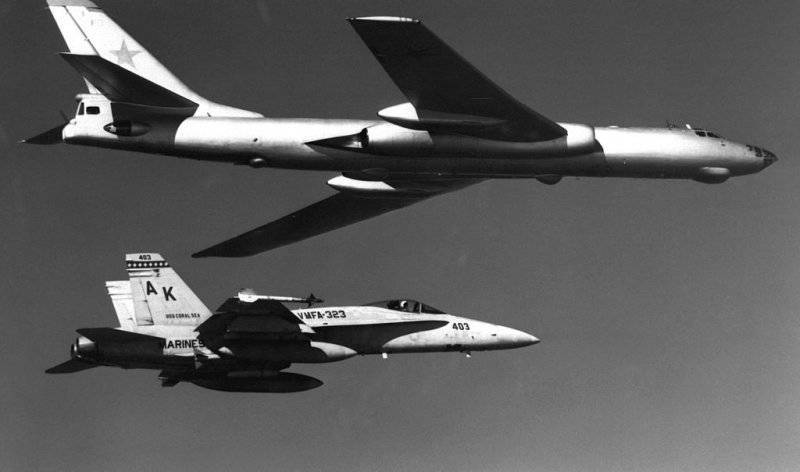
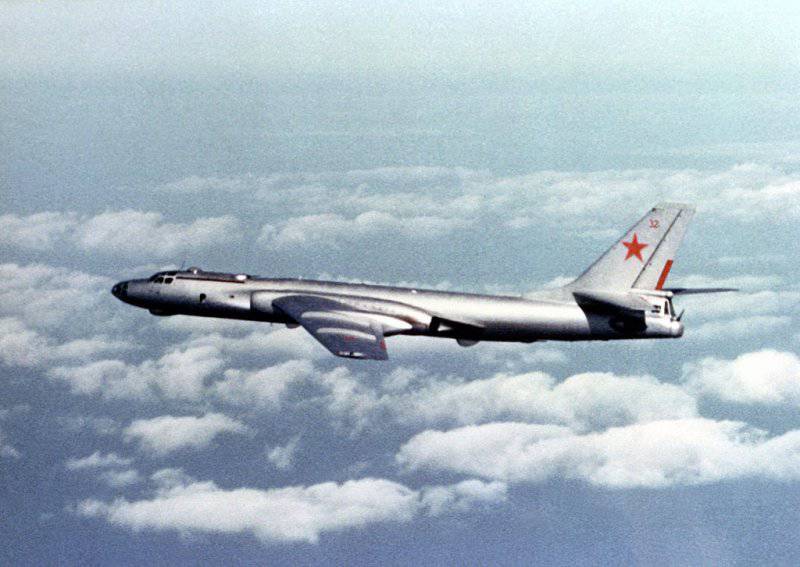
Information